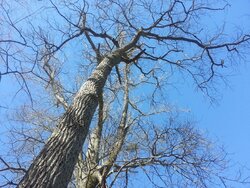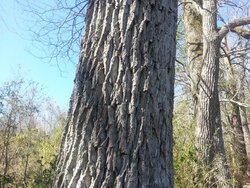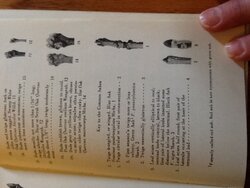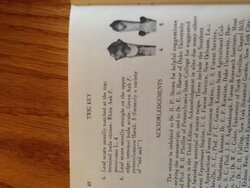tree clarification
- Thread starter Rebelduckman
- Start date
-
Active since 1995, Hearth.com is THE place on the internet for free information and advice about wood stoves, pellet stoves and other energy saving equipment.
We strive to provide opinions, articles, discussions and history related to Hearth Products and in a more general sense, energy issues.
We promote the EFFICIENT, RESPONSIBLE, CLEAN and SAFE use of all fuels, whether renewable or fossil.
You are using an out of date browser. It may not display this or other websites correctly.
You should upgrade or use an alternative browser.
You should upgrade or use an alternative browser.
- Status
- Not open for further replies.
bigbarf48
Minister of Fire
Woody Stover
Minister of Fire
White Ash, I think. Bark looks a bit coarser than what I see here, though...
It has the opposite branching so that's what i been thinking.
Sinngetreu
Feeling the Heat
I keep thinking Cottonwood with the deep grooves in the bark. I could be wrong though.
Never heard anybody around these parts mention cottonwood but it very well may be
Senatormofo
Member
Applesister
Minister of Fire
Woody Stover
Minister of Fire
What is that trunk diameter?
Rebelduckman, what is the site like, swampy or in a flood plain? If so, that's what the Swampers like. Range map shows Swamp Cottonwood to be far less common than regular Cotton....
Range includes your area.Never heard anybody around these parts mention cottonwood but it very well may be
Interesting, The book shows sparse range of Swamp Cottonwood here. I've seen what I assumed was just plain Cottonwood, but I'll have to look closer. Never paid much attention as I never went after it for firewood.Swamp Cottonwood
Rebelduckman, what is the site like, swampy or in a flood plain? If so, that's what the Swampers like. Range map shows Swamp Cottonwood to be far less common than regular Cotton....
What is that trunk diameter?
Range includes your area.
Interesting, The book shows sparse range of Swamp Cottonwood here. I've seen what I assumed was just plain Cottonwood, but I'll have to look closer. Never paid much attention as I never went after it for firewood.
Rebelduckman, what is the site like, swampy or in a flood plain? If so, that's what the Swampers like. Range map shows Swamp Cottonwood to be far less common than regular Cotton....
It's on my fence row,Wouldn't consider it swampy. Is there a site I could go to find out what area I'm in?
Woody Stover
Minister of Fire
I don't know much about what's available online; I've been using this book:
http://www.abebooks.com/National-Audubon-Society-Field-Guide-North/1326858366/bd
It's got pics of leaf, bark (sometimes the bark isn't too close to what I see,) fruit and flowers. Another section has a detailed description of habitat, tree shape and size, leaf structure and appearance, twigs, bark and natural range. Also gives a brief description of history and uses. I haven't read the other guides out there, but this one is very useful.
http://www.abebooks.com/National-Audubon-Society-Field-Guide-North/1326858366/bd
It's got pics of leaf, bark (sometimes the bark isn't too close to what I see,) fruit and flowers. Another section has a detailed description of habitat, tree shape and size, leaf structure and appearance, twigs, bark and natural range. Also gives a brief description of history and uses. I haven't read the other guides out there, but this one is very useful.
[Thanks "Woody Stover, post: 1693730, member: 16447"]I don't know much about what's available online; I've been using this book:
http://www.abebooks.com/National-Audubon-Society-Field-Guide-North/1326858366/bd
It's got pics of leaf, bark (sometimes the bark isn't too close to what I see,) fruit and flowers. Another section has a detailed description of habitat, tree shape and size, leaf structure and appearance, twigs, bark and natural range. Also gives a brief description of history and uses. I haven't read the other guides out there, but this one is very useful.[/quote]
thx
http://www.abebooks.com/National-Audubon-Society-Field-Guide-North/1326858366/bd
It's got pics of leaf, bark (sometimes the bark isn't too close to what I see,) fruit and flowers. Another section has a detailed description of habitat, tree shape and size, leaf structure and appearance, twigs, bark and natural range. Also gives a brief description of history and uses. I haven't read the other guides out there, but this one is very useful.[/quote]
thx
Applesister
Minister of Fire
You are in the range of both Cottonwoods and chestnut oaks. So your challenge is to decipher which. They both look very similar.
Im in NY on dry soil and I have both species. And they look very similar.
Im in NY on dry soil and I have both species. And they look very similar.
Applesister
Minister of Fire
Maybe Chestnut oak developed bark similar to cottonwood to hide from the axeman?
hiites
Member
If it has opposite branching and can be narrowed down to an ash, here is the twig key for common ashes that may help.
View attachment 129701
View attachment 129702
Thanks that will help a lot
Paulywalnut
Minister of Fire
ArsenalDon
Minister of Fire
Is is growing near water? If so, the deep grooves as others have said say cottonwood. Also thump on it, if it sounds hollow and it is growing near a ditch or other place water gathers then cottonwood most likely.
This spring if it has that white cottonwood fur flying off it that is how you know for sure too.
This spring if it has that white cottonwood fur flying off it that is how you know for sure too.
Is is growing near water? If so, the deep grooves as others have said say cottonwood. Also thump on it, if it sounds hollow and it is growing near a ditch or other place water gathers then cottonwood most likely.
This spring if it has that white cottonwood fur flying off it that is how you know for sure too.
Not near any water
ArsenalDon
Minister of Fire
Does not mean it is not cottonwood, but cottonwood most often grows near creeks. Ive got a big one not on the creek though. Try the other tests, and for sure you will know late this spring with the fuzz that comes off the tree.Not near any water
Does not mean it is not cottonwood, but cottonwood most often grows near creeks. Ive got a big one not on the creek though. Try the other tests, and for sure you will know late this spring with the fuzz that comes off the tree.
Will do
Ralphie Boy
Minister of Fire
Cottonwood, dat ain't ash. I've got a bunch of cottonwoods growin' down in the bottom land. I's betchya a couple ah wood nickles dat ifn ya puts your climbin boots on an gets ah closter look its opposite branching.

- Status
- Not open for further replies.
Similar threads
- Replies
- 12
- Views
- 722





